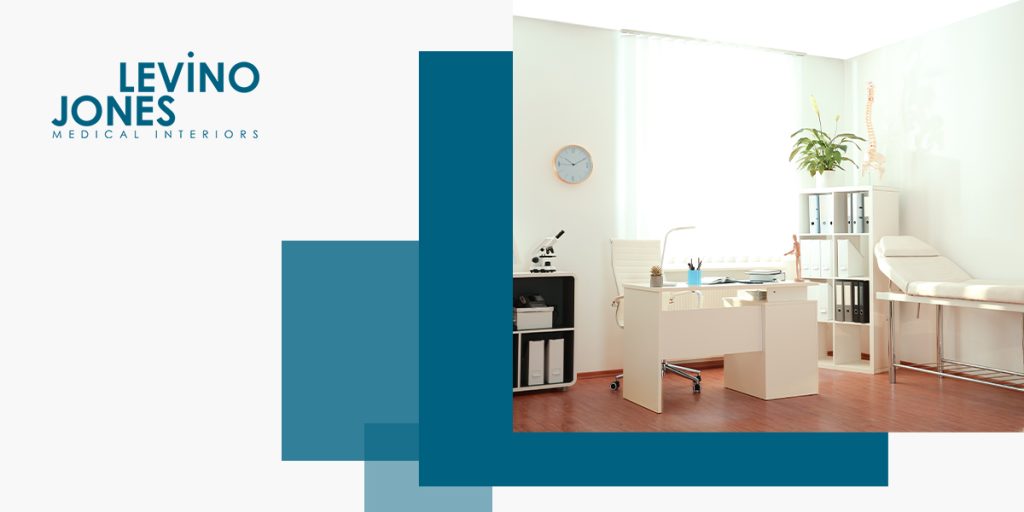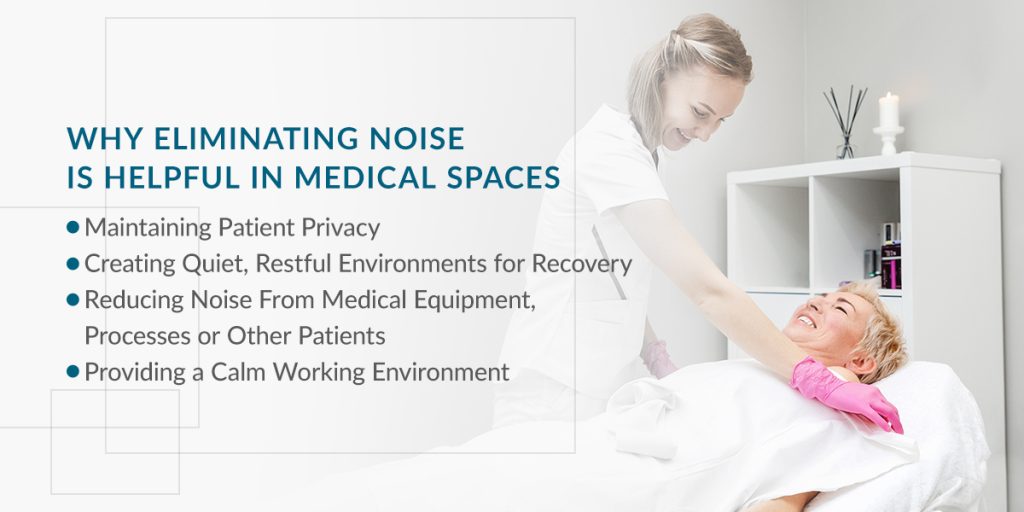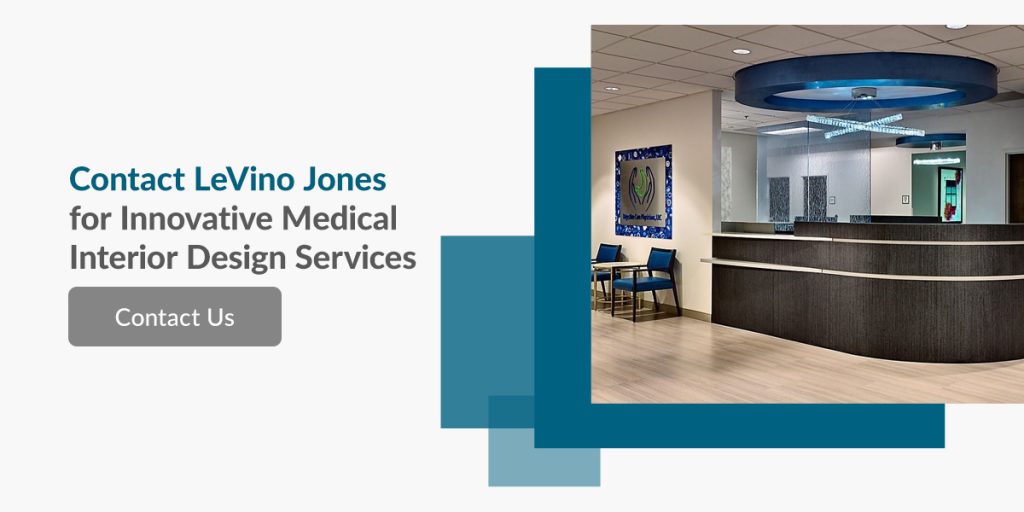
How patients and providers perceive the acoustics in a medical space largely depends on many hidden factors. However, the noise level in a room is crucial to the overall environment your medical practice wishes to create, making it an essential element in any design process.

Sound pollution is all around us! It triggers our body’s stress response contributing to a wide array of mental and physical ailments. That is why designers need to consider sound absorption in health care facilities. Improving acoustics in medical facilities will reduce stress by promoting patient healing and staff productivity.
Some of the top reasons why acoustics are an essential factor in any medical space include:
When visiting a doctor to seek help for various ailments, patients must disclose private information. As a professional in a medical office, you are responsible for safeguarding sensitive information. To ensure your patient’s privacy is safe, soundproof areas like examination rooms. By soundproofing, you can increase patient comfort in your office and encourage a deeper level of trust and understanding.
According to the World Health Organization, the ideal noise level in a patient’s room should not be louder than a whisper to aid patient recovery. High noise levels can disrupt sleep which can negatively impact the healing process. Excessively noisy medical spaces can also lead to higher levels of stress and increased blood pressure while reducing overall job satisfaction and productivity.
External noises from monitors, medical devices, wheelchairs or other machinery can impact patient recovery, making it essential to invest in noise-canceling design. Hearing employees or other patients’ families can also impact a patient’s experience. For example, if you operate a pediatric practice, there may be many children playing in the waiting area. This high amount of noise may make it hard for you and your patient to focus on their visit, which can reduce the quality of care.
Investing in proper acoustics can benefit your employees as well as your patients. Loud environments can make it harder for practitioners to focus on their work, which reduces productivity levels. Poor acoustics may also make it harder for employees to hear one another, leading to miscommunication and a more significant margin for error.
After an object or person produces a noise, the sound waves spread evenly throughout the air. If the sound waves encounter a barrier, they become reflected, absorbed or scattered. While hard surfaces reflect sound into the room, soft and porous materials absorb the sound waves.
There are a few sound treatment ideas for interior design your practice can use to control and reduce noise levels. While the best approach will depend on your facility, some of the top interior design ideas to reduce noise include:
Sound plays a valuable role in spatial planning when designing a medical interior. Patients do not want to hear their neighbor’s medical discussions, nor vice versa, so sound barriers help alleviate this problem. Through acoustical analysis, 3-Form has concluded that adding a well-placed geometric panel forces the sound onto another surface for absorption or reflection. By using 3-Form panels, the LeVino Jones team can create custom acoustic panels for the walls and ceiling of your medical space that also serve as art pieces.
There are a variety of solutions and products LeVino Jones designs and specifies to absorb sounds, like sound batting in ceilings and walls. These solutions act as insulation for hollow structural areas, like between the metal studs in a health care facility’s walls. The result helps minimize the sound and heat energy that can transfer between spaces.
Our team can also implement acoustical ceiling tiles and plasterboard to diffuse and absorb sound waves to prevent them from traveling throughout your space and offer more significant noise reduction. These panels have a thicker composition, and our team can use them in combination with other soundproofing materials, such as cotton and polyester. One of the more creative acoustical panel designs is the MDC Zintra line, which can control sound in an exposed, high-ceiling space.
If your medical practice is on a busy road or in other areas where it’s challenging to control the amount of noise present, you may want to incorporate white noise machines into your design. Playing white noise such as waves or rain allows your office to mask unwanted sounds easily. Many modern white noise machines can also produce sounds at neutral frequencies to help lower stress levels and generate a calmer environment.
One of the easiest ways to reduce noise pollution in medical offices is to add some plants and other greenery. Choose bigger plants, as they offer excellent noise absorption. Or, you can invest in creating a garden wall to help your space look beautiful while lowering noise levels. Using plants can also give the area an effortlessly calm aesthetic and potentially improve the air quality of your building.
As you create your noise-canceling design, you should also consider the sound that can enter through doors. Doors that connect two rooms can have space between the floor and the frame, which may cause the sound waves to move throughout the space. While you can invest in new doors, another option is to use sweeps and door seals to prevent noise from entering or exiting a room.
Soundproofing paint is an excellent option for reducing sound reverberations. Noise-reducing paint is easy to apply, and you can use it to fill any gaps in the doors or walls. Most soundproofing paint options are easy to apply and odor free.

At LeVino Jones, we help clients choose the right combination of materials and furniture to enhance the layout and acoustics of any room. Our expert team can help your practice eliminate excess noise through effective design and seamlessly integrate our choices into your overall interior decor.
When designing the interior of your medical practice, you want a space that is as calm and comfortable as possible. At LeVino Jones, our team will take the time to understand your specific design concerns and work with you to create a space to meet your and your patients’ needs. Since the creation of our company in 1988, we have helped medical practices in various fields elevate their design through effective noise-reducing methods.
We work with medical offices across the United States and are happy to meet remotely to discuss your design goals. Please contact us to learn more or schedule a remote consultation to take the first steps toward bringing your design to life.